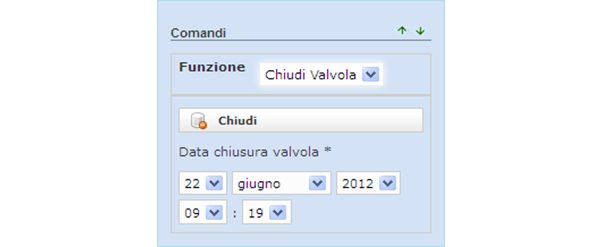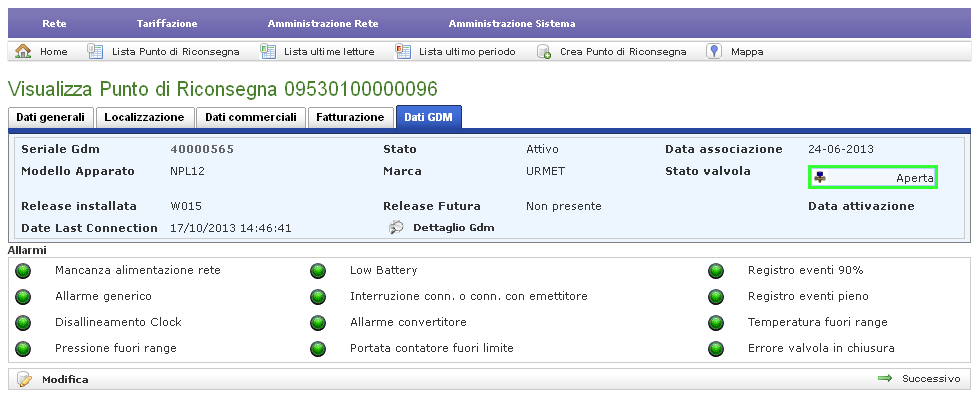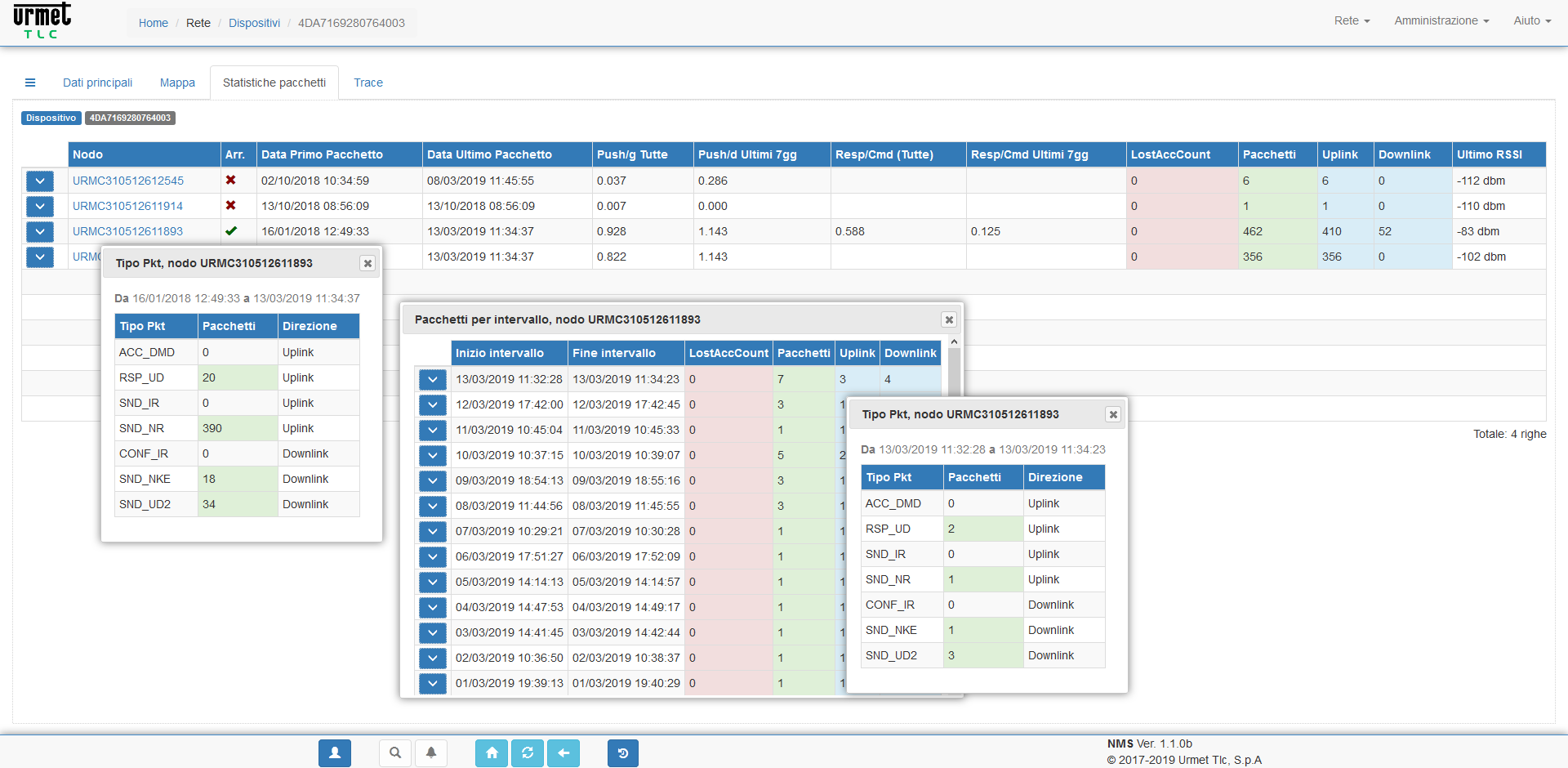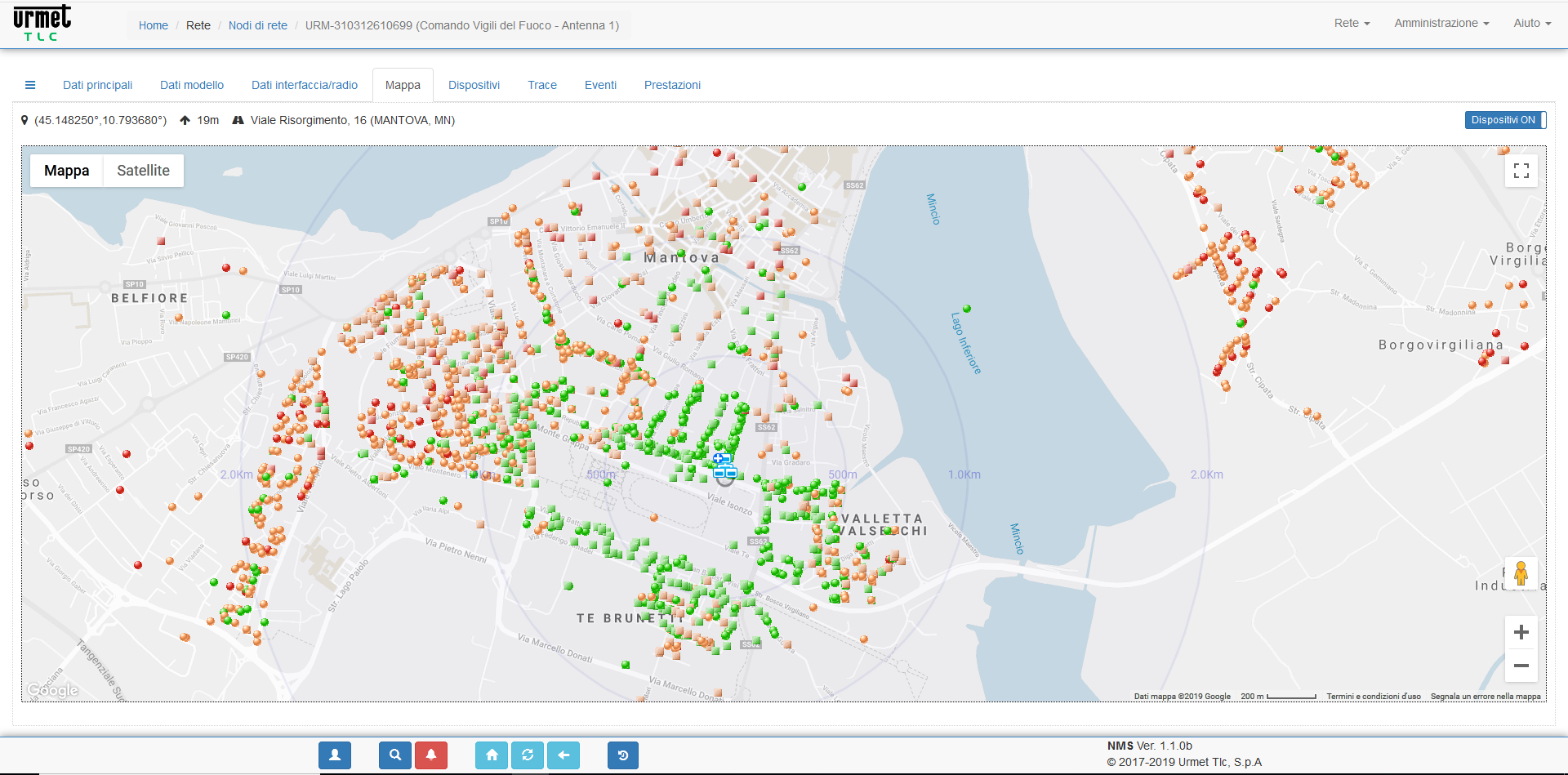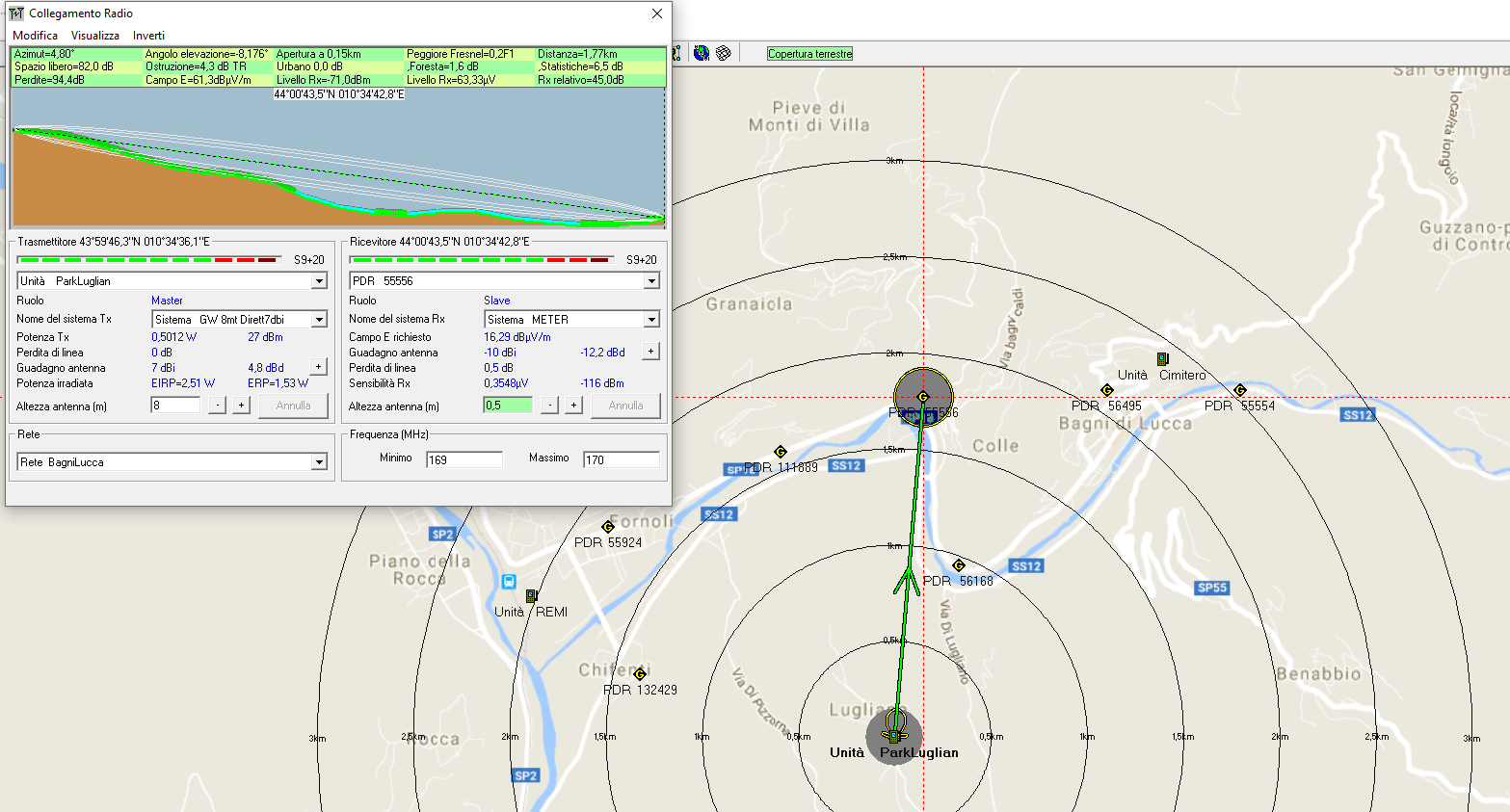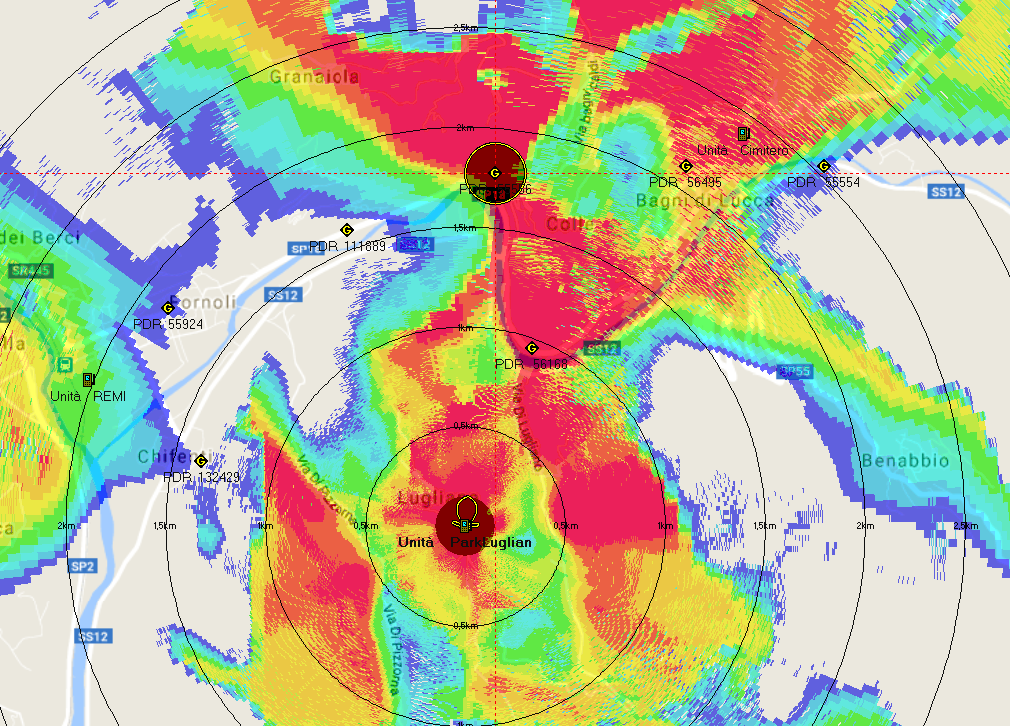The proper functioning of a meter network lies in the coverage of the territory and in the quality (continuity and reliability) of the radio signal. For this reason, Urmet TLC research has mathematical models for the study and feasibility of the position of meters and antennas. In the design phase, the team supports and supports companies in defining and installing a correct smart metering network.
The remote management of the devices and the real-time reporting of critical points is also very important. Through dedicated software it is possible to manage both the data of the users and the operation of the meters and gateway: a tested and punctual system of global management of the network 169 MHz / LoRa.

